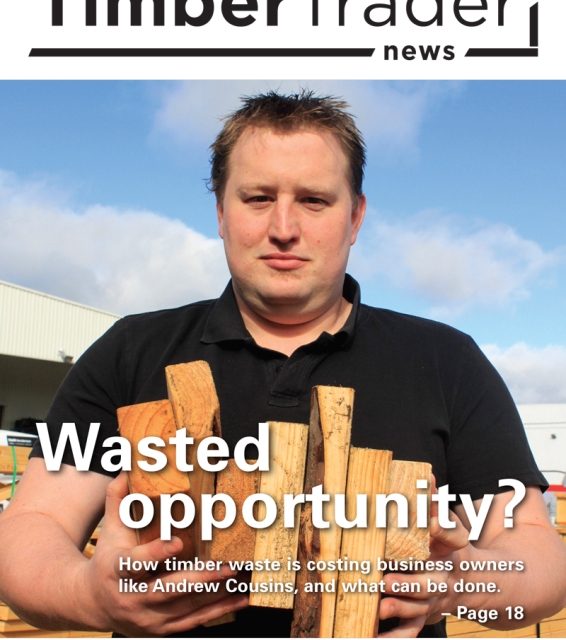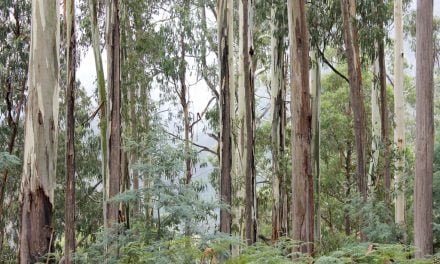I recently spoke to numerous industry members about this issue, to get to the bottom of the various ways it effects business processes, costs, and how it could be hindering potential growth opportunities.
After attending many timber industry events this year, including conferences, breakfasts, and dinners, it came to my attention that timber waste, and what to do with it, is a significant problem across the timber industry.
Timber waste and offcuts, and the disposal of the material, is disruptive for many business owners. A quote I overheard at an event earlier this year summed it up perfectly, “Until we learn how to grow a square tree, timber waste will continue to be a massive issue for everyone,” and that sentiment is one I have continued to hear across the entire supply chain.
Whether it be interviewing a timber merchant manager, a truss fabricator, or speaking with an industry association representative, the issue of what to do with timber waste has left many industry members consistently frustrated.
The frustration stems from the restrictions surrounding the removal of timber waste, based on the application of timber treatments H2F and Chromated Copper Arsenate (CCA). The issues born out of the types of timber treatments being used are complex, and then there are the limitations on timber waste being used in renewable ways including biomass energy, mulch, woodchips, and new wood products.
I spoke with Kersten Gentle, Andrew Cousins, and Graham Leddy about this issue, and got their insights into how it is effecting their areas within the timber supply chain – and what should happen next to ensure business owners, and the environment,
can reap the potential benefits.
ANDREW COUSINS, GENERAL MANAGER, ABEL TRUSS
Timber waste effects our business because it’s a cost to us, and it’s also an environmental hassle. No matter what manufacturing industry you’re in, you are bound to encounter some type of waste. It is an inevitable occurrence, but because we’re a timber truss manufacturer, we are using a renewable product. I can see that we have an opportunity to turn this waste into something valuable, not just for our business, but for the entire industry.
We work in three week blocks, and in that time we can be dealing with roughly 23 cubic meters of waste, easy.
The restrictions on us include the fact that some of the treatments used with our timber products can cause hassles, because of what is considered safe for re-use. The uneducated often find issues with treatments, and hold fears over the handling of the waste of those timber products as a result, often to our detriment. As soon as they hear the word ‘treatment’, that seems to scare off a lot of people.
We have tried a couple of strategies, and we work with companies that make insulation and engineered wood products, but we have had some restrictions in those instances. We are just really keen to get the word out there that we have excess timber waste, and we don’t want it.
Promoting the benefits of timber waste is about changing the opinions and views of the public. Instead of seeing waste as a ‘problem’ per se, it would be great if everyone viewed it as an opportunity.
Because at the moment, we are stuck in an industry with a lot of ‘old heads’ and old processes, and it’s all about creating a new idea and set of processes to tackle this issue.
It does not just apply to our factory, but anyone dealing with a timber waste product. We need the benefit to outweigh the cost, which could be in the form of a better government incentive.
It needs to be more affordable for the small to medium sized business, because they are the ones relying on a profitable solution the most.
Timber waste is actually a timber opportunity, absolutely. It is the same as when we first started making trusses in the industry. It was seen as another task, another process, and put quite simply, another hassle. But once those in construction saw the benefits of less timber being used on site and more effective and creative designs (and architects loved that), trusses were embraced.
While it may not be that simple, I would really love to see new industries born out of what we do, and there are fantastic opportunities in this area, where a whole industry could be born just out of timber waste.
I want to see better ways for businesses in the frame and truss industry, and for us all to be able to achieve better economic growth, especially with a material we already have at our disposal – pardon the pun!
There has to be a better way and a better opportunity out there, I know it.
KERSTEN GENTLE, MANAGER OF THE FTMA
Timber waste cause issues for fabricators because the disposal of offcuts causes unnecessary costs, especially when dealing with the H2F treated timbers. Most of the timber waste goes into landfills, and the state government levies vary from state to state, with New South Wales (NSW) charging the highest levies in the country.
The biggest obstacles include the fact that the Environment Protection Authority (EPA) in NSW doesn’t allow H2F treated products to be used in animal bedding or garden mulch. They treat all treated timbers as the same, which is outrageous given the fact that H2F breaks down and should be in a totally different category to CCA. The EPA should have a ‘traffic light system’ relating to the varying timber treatments out there, but instead they treat all treatments the same, which has problematic consequences for fabricators.
The FTMA Australia has initiated discussions across the supply chain between fabricators, timber suppliers and treatment companies. This issue needs to be addressed across the supply chain before we face the real possibilities of further restrictions when it comes to the disposal of waste timber. It is outrageous that you can dispose of plastic, cardboard and steel for free, yet timber – an organic product – costs so much. The FTMA has also been working with waste brokers, and exploring other options for the use of timber waste, including the opportunity to turn it into a valuable product offering.
The FTMA is working with fabricators to collaboratively find a solution, which may be as simple as tendering waste out as one group – rather than individual businesses – which would reduce costs for everyone.
GRAHAM LEDDY, MANAGER, VERSACE TIMBERS
Timber waste causes issues for merchants in Australia because currently, as an example, our waste disposal contractor Waste 2 Resources offers us five different bin types; timber only, cardboard, plastic wrap, comingle, and general waste.
Ideally, we would dispose of all timber in the timber only bin. However, this bin type is restricted to untreated and H2F treated pine, and untreated hardwood.
This timber waste is then sent to the Rocky Point Green Power Plant, and used as fuel to generate renewable electricity. All other timbers such as Green Off Sawn (GOS) hardwood, Light Organic Solvent Preservative (LOSP) treated timber, laminated or finger joined timber, Alkaline Copper Quaternary (ACQ) or CCA treated pre-primed timber, and engineered timber products are not approved wood residues, and as a result, are disposed of in general waste.
The cost to dispose of timber and general waste is pretty much the same, so the efforts to separate the approved timber from the non-approved timber residue are really no benefit to our company’s bottom line. However, we do go to the extra effort because it does align with our mission statement which states, “We are committed to providing high-quality, sustainable timber products.”
We believe it is better for the environment to convert timber waste into renewable electricity, rather than disposing of it into landfill.
Initiatives that associations are currently driving to combat the issue include a great one by the Timber and Building Manufacturers Association (TABMA), who teamed up years ago with international waste management business Veolia to offer a number of waste separation solutions (as mentioned earlier).
Education and training needs to happen next. Many years ago, all of our waste went straight to the tip. It was costing us a fortune to do this, so we went to the market looking for ways we could better dispose of our waste. It was TABMA that initially got us on the right track, introducing us to Veolia who went on to educate us about the benefits of waste separation.
It did involve re-training staff, and while it was not all smooth sailing, it was definitely timely for us. It was during the Global Financial Crisis (GFC), where any potential cost savings were being welcomed with open arms.
To reduce our waste disposal expenses by more than half was very pleasing. It was then through further research that we found a contractor that went another step further, providing us with a similar service to Veolia, but with even more waste separation options.
This issue needs to be addressed across the supply chain, and we must continue to gather information to benchmark the waste issue. A report and survey was completed in 2011 by the Forest and Wood Products Association and the Timber Development Association titled, ‘Opportunities for post-consumer H2F treated blue-pine off-cuts and resource recovery exemption application for end of life wood’.
The study included a survey of all fabricators, in order to gather information relating to the waste costs and amounts within the industry. At the time, this showed that an average 7 per cent of a fabricator’s total timber input ended up as waste.
We need to re-do the survey to gauge whether this is still the case, and how the costs have risen.
WHAT’S HAPPENING NEXT?
The issue of timber waste and its disposal restrictions is an ongoing issue, but there are currently initiatives and activities in play that are aiming to combat timber waste problems, aiming to ensure longevity for the timber merchant, sawmiller, and the frame and truss manufacturer.
Some recent developments include:
- The FTMA and ForestWorks have formed a Frame and Truss Innovation Working Group to try and tackle the timber waste issue in a collaborative way.
- In June 2015 the Renewable Energy Target (RET) was amended to include native forest wood waste as an approved biomass renewable energy source.
Amid concerns from environmental groups about this development, the Victorian Senator Ricky Muir posed the question in Parliament to clarify the definition of what constitutes as native forest wood waste.
It was confirmed that the waste, such as tree branches, sawdust and timber offcuts from sustainable forest harvesting and processing operations, would be the only wood waste used.
Does timber waste cost you? If so, let us know your story by emailing editor@timbertradernews.com










